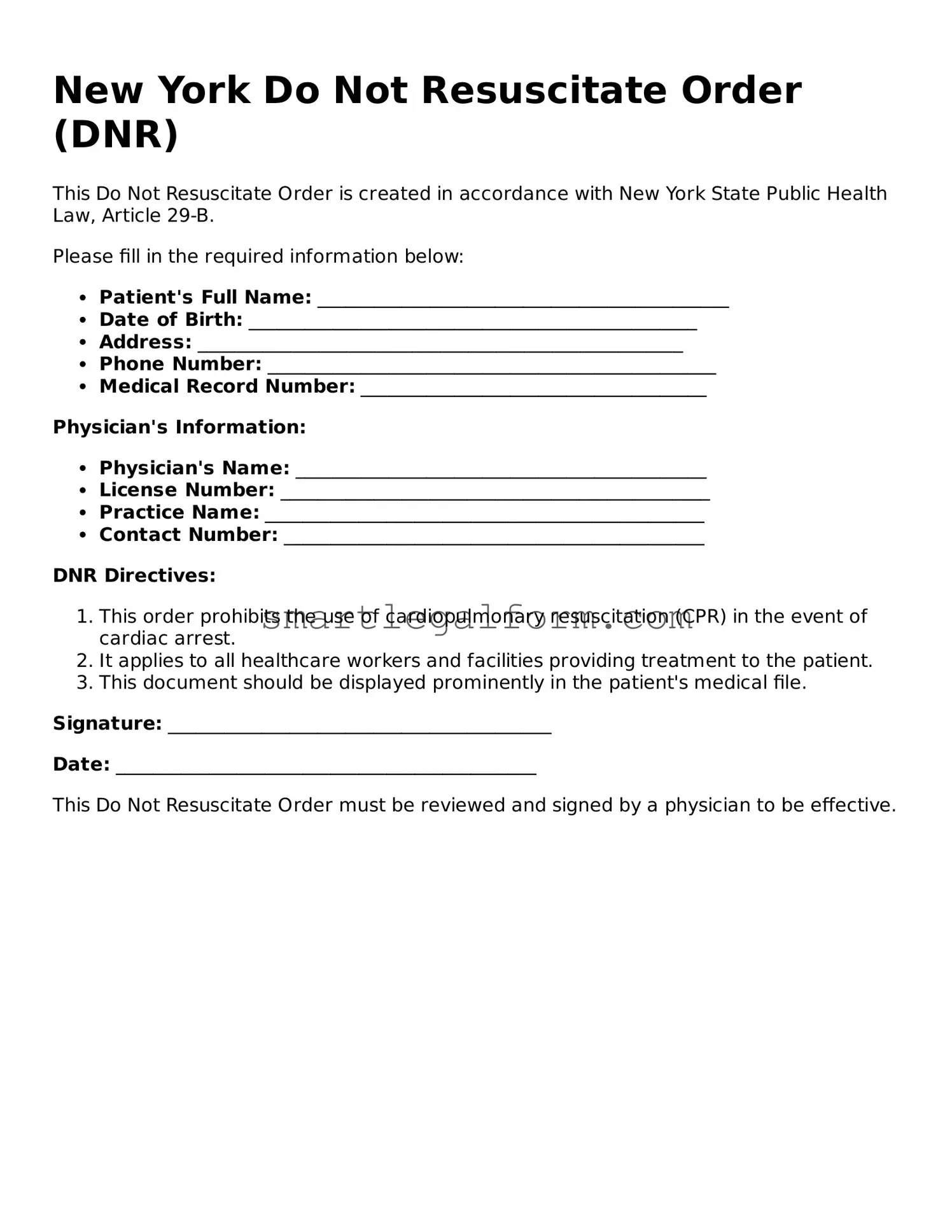New York Do Not Resuscitate Order (DNR)
This Do Not Resuscitate Order is created in accordance with New York State Public Health Law, Article 29-B.
Please fill in the required information below:
- Patient's Full Name: ____________________________________________
- Date of Birth: ________________________________________________
- Address: ____________________________________________________
- Phone Number: ________________________________________________
- Medical Record Number: _____________________________________
Physician's Information:
- Physician's Name: ____________________________________________
- License Number: ______________________________________________
- Practice Name: _______________________________________________
- Contact Number: _____________________________________________
DNR Directives:
- This order prohibits the use of cardiopulmonary resuscitation (CPR) in the event of cardiac arrest.
- It applies to all healthcare workers and facilities providing treatment to the patient.
- This document should be displayed prominently in the patient's medical file.
Signature: _________________________________________
Date: _____________________________________________
This Do Not Resuscitate Order must be reviewed and signed by a physician to be effective.
